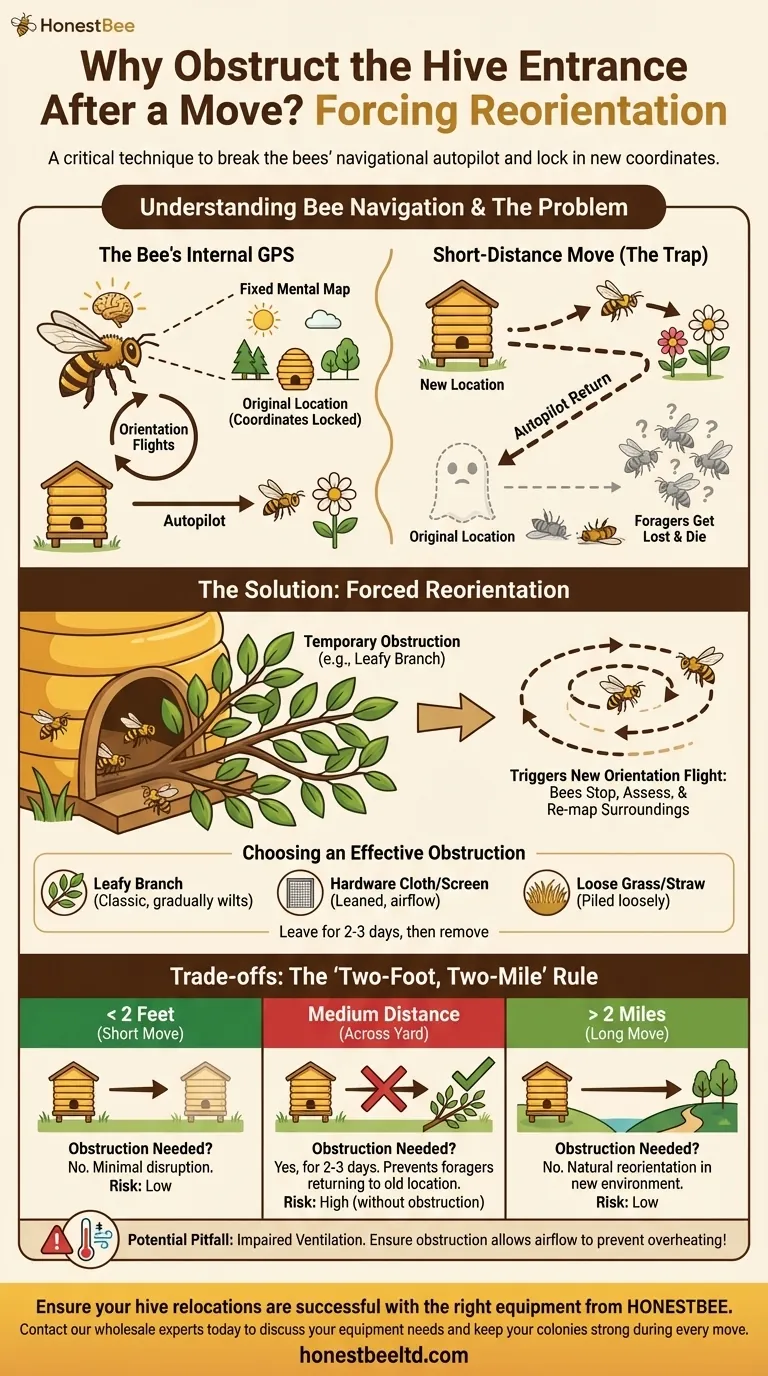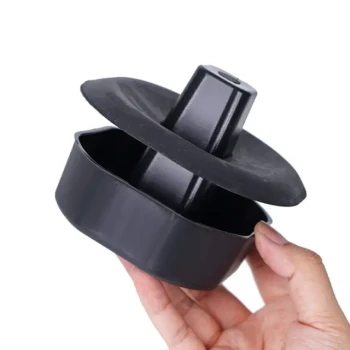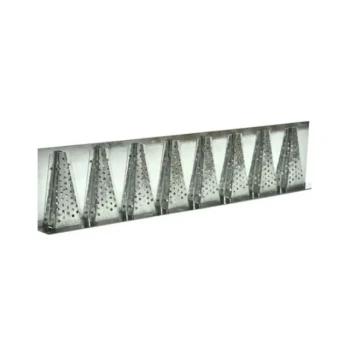Placing a temporary obstruction in front of a hive entrance after a move is a critical technique used to force the colony's foraging bees to reorient themselves. By creating an unfamiliar barrier, such as a leafy branch, you break the bees' navigational autopilot and compel them to perform new orientation flights, locking in the hive's new coordinates and preventing them from returning to the old location.
The primary risk of moving a hive a short distance is that foraging bees will use their established spatial memory, return to the empty original hive location, and become lost. Obstructing the entrance breaks this routine, forcing them to remap their surroundings and accept the new placement.

Understanding Bee Navigation: The Root of the Problem
To grasp why an obstruction is so effective, you must first understand how a honey bee navigates its world. This isn't just about finding flowers; it's about an incredibly precise return to a single, fixed point.
The Bee's Internal GPS
From a young age, a foraging bee performs a series of orientation flights. It hovers in front of the hive, flying in expanding circles while memorizing local landmarks and the sun's position. This process creates a highly accurate mental map, essentially programming the hive's exact location into its "GPS."
The "Autopilot" of a Forager
Once this location is locked in, daily foraging trips become routine. A bee will exit the hive on autopilot, fly to a known resource, and navigate back to the precise coordinates of its home without a second thought. This efficiency is key to the colony's success.
The Consequence of a Short-Distance Move
This navigational precision becomes a liability when you move a hive a short distance (e.g., from one side of a yard to the other). The next morning, foragers will leave the new location, collect pollen or nectar, and attempt to fly back to the original spot.
When they arrive and find their home gone, they become confused. They will cluster in the air where the entrance used to be, eventually dying from exposure and starvation. This can result in the loss of a significant portion of the colony's workforce.
The Mechanics of a Forced Reorientation
The entrance obstruction is a simple but powerful tool that directly manipulates the bee's innate navigational behavior. It acts as a pattern interrupt.
Breaking the Routine
When a bee attempts to exit the hive on autopilot, it immediately encounters the unexpected barrier. It cannot simply fly out as usual. This sudden change signals that something fundamental about its environment is different.
Triggering a New Orientation Flight
This disruption forces the bee to stop and assess the situation. It will often crawl through the obstruction (like a leafy branch) and, upon exiting, will be prompted to perform a new orientation flight. You will see bees hovering and circling in front of the new entrance, re-mapping the area just as they did when they were young.
Choosing an Effective Obstruction
The ideal obstruction is temporary and forces bees to crawl but does not completely block airflow.
- A leafy branch laid against the entrance is the classic choice. The leaves will wilt and shrink over a few days, gradually clearing the entrance.
- A piece of hardware cloth or screen mesh can be leaned against the entrance.
- A loose pile of grass or straw also works well.
The obstruction should typically be left in place for 2-3 days before being removed.
Understanding the Key Trade-offs
While this method is highly effective, it's crucial to apply it correctly. The decision to use an obstruction depends entirely on the distance of the move.
The "Two-Foot, Two-Mile" Rule
A classic beekeeping axiom states that you should move a hive either less than two feet or more than two miles. Anything in between risks significant forager loss. The entrance obstruction method is specifically designed for breaking this rule and successfully moving a hive a "medium" distance within the same apiary.
When an Obstruction is Unnecessary
If you move a hive more than two miles, the entire landscape is foreign. Upon their first exit, the bees will immediately recognize they are in an unknown location and will naturally perform orientation flights. No obstruction is needed in this scenario.
Potential Pitfalls to Avoid
The primary risk is impaired ventilation. Never use a barrier that completely seals the entrance, especially in hot weather, as the colony can quickly overheat. The goal is to confuse, not confine. Using a dense material or leaving it on for too long is counterproductive.
Making the Right Choice for Your Move
Your strategy should be dictated by the distance of the relocation.
- If your primary focus is a short-distance move (e.g., across your yard): You must use an entrance obstruction for 2-3 days to force reorientation and prevent the loss of your foraging workforce.
- If your primary focus is a long-distance move (over two miles): No entrance obstruction is necessary, as the completely new environment will naturally trigger the bees' reorientation behavior.
- If your primary focus is colony safety during the process: Always ensure your chosen obstruction allows for adequate airflow to prevent the hive from overheating.
By understanding the bee's navigational instincts, you can manage hive relocations with confidence and ensure the strength of your colony remains intact.
Summary Table:
| Move Distance | Entrance Obstruction Needed? | Primary Risk |
|---|---|---|
| Less than 2 feet | No | Minimal disruption |
| Short distance (e.g., across a yard) | Yes, for 2-3 days | Foragers return to old location and die |
| More than 2 miles | No | Bees naturally reorient in new environment |
Ensure your hive relocations are successful with the right equipment from HONESTBEE.
Moving hives safely requires reliable tools and expert knowledge. As a trusted supplier of beekeeping supplies and equipment for commercial apiaries and distributors, HONESTBEE provides the durable gear you need—from ventilated entrance blocks to secure hive straps—to manage your colonies with confidence.
Contact our wholesale experts today to discuss your equipment needs and keep your colonies strong during every move.
Visual Guide

Related Products
- Beehive Entrance Reducer Guardian Metal Hive Entrance for Bees
- Multi-Functional Sliding Hive Entrance for Beekeeping
- Steel Round Disc Entrance Reducer for Flexzion Bee Hive Nuc Box Gate
- Multi-Functional Rotary Hive Entrance Disc for Beekeeping
- Professional Ant-Proof Beehive Stand with Integrated Moat for Beekeeping
People Also Ask
- What are the features of the side with oblong holes in the entrance reducer? A Guide to Hive Defense & Health
- What should be done after transferring frames to the new hive? Essential Steps for a Secure Colony
- What happens if you seal an entrance to a bee hive? Avoid a Costly Structural Disaster
- What are the two functions of the Entrance Reducer? Master Hive Defense and Safe Transport
- How big should a beehive entrance be? Optimize for Colony Health & Honey Production



















